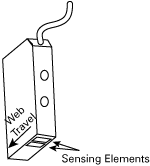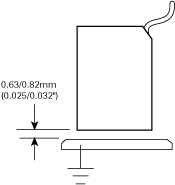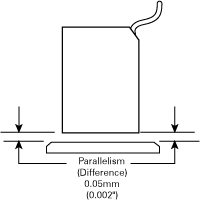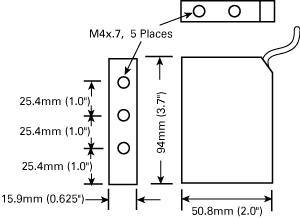Label Sensors TechNote LT04-0020
Copyright © 2007 Lion Precision. www.lionprecision.com
Summary
The LRD4100 missing label sensor has stringent mounting requirements to assure reliable operation. An unvarying parallelism between the sensor surface and the baseplate over which the web travels is critical.
Basic Sensor Operation

The LRD4100 uses a differential sensor arrangement. Two individual sensing elements use electric fields to measure the thickness of the web (see figure). When a label is under one sensing element and a gap is under the other sensing element, the difference causes the sensor to trigger. The sensing elements also sense the base plate over which the web travels. It is critical that the gaps between the sensing elements and the base plate are the same so there is no difference between the sensing elements. This means that the sensor face must be perfectly parallel to the base plate.
Base Plate Design

Beneath the sensor the web must travel over a conductive, grounded base plate. To maintain the gap to the required specs, the base plate must be flat and stationary (see figure). Use of a roller would require an incredibly precise, large-diameter roller and precision bearing and will not produce reliable results.
Web Path
The web must ride on the base plate; it must not be allowed to “float” in the gap between the base plate and the sensing surface.
Mounting for Parallelism and Gap Control

The sensor must be rigidly mounted such that the gap and sensor/base parallelism is not affected by vibration or temperature. Any changes in parallelism due to temperature or vibration will make the sensor unreliable (see figure).
Gap between sensor and base plate: 0.63 to 0.82mm (0.025 to 0.032″)
Parallelism: 0.05mm (0.002″)

